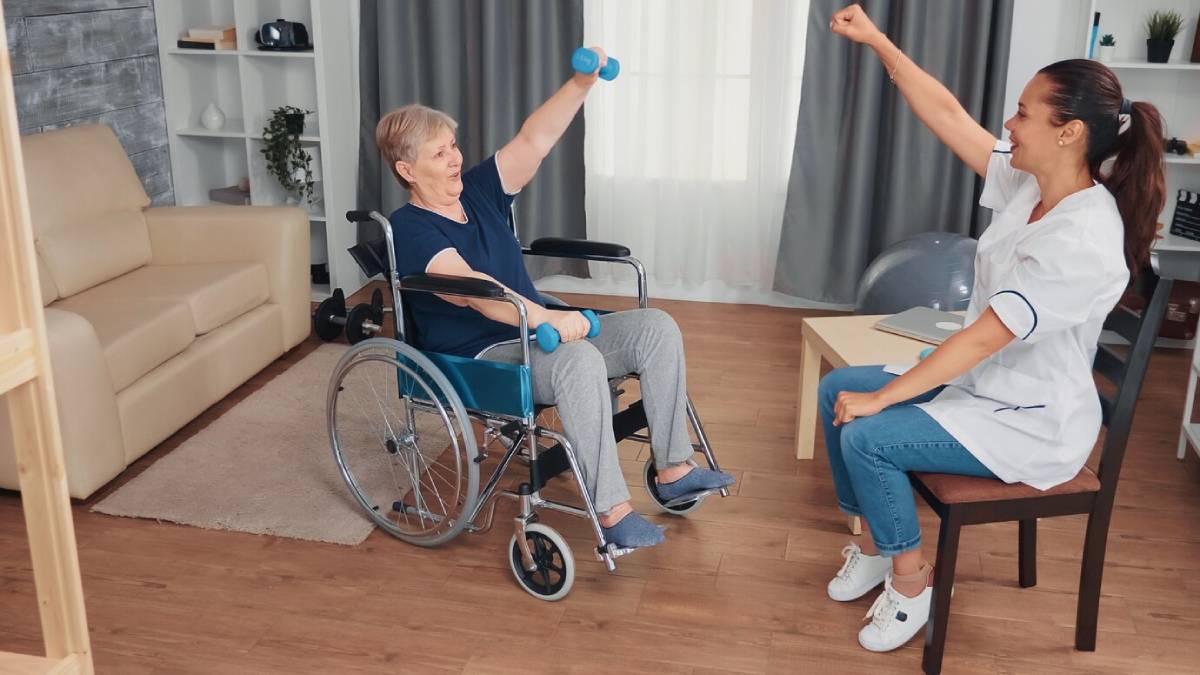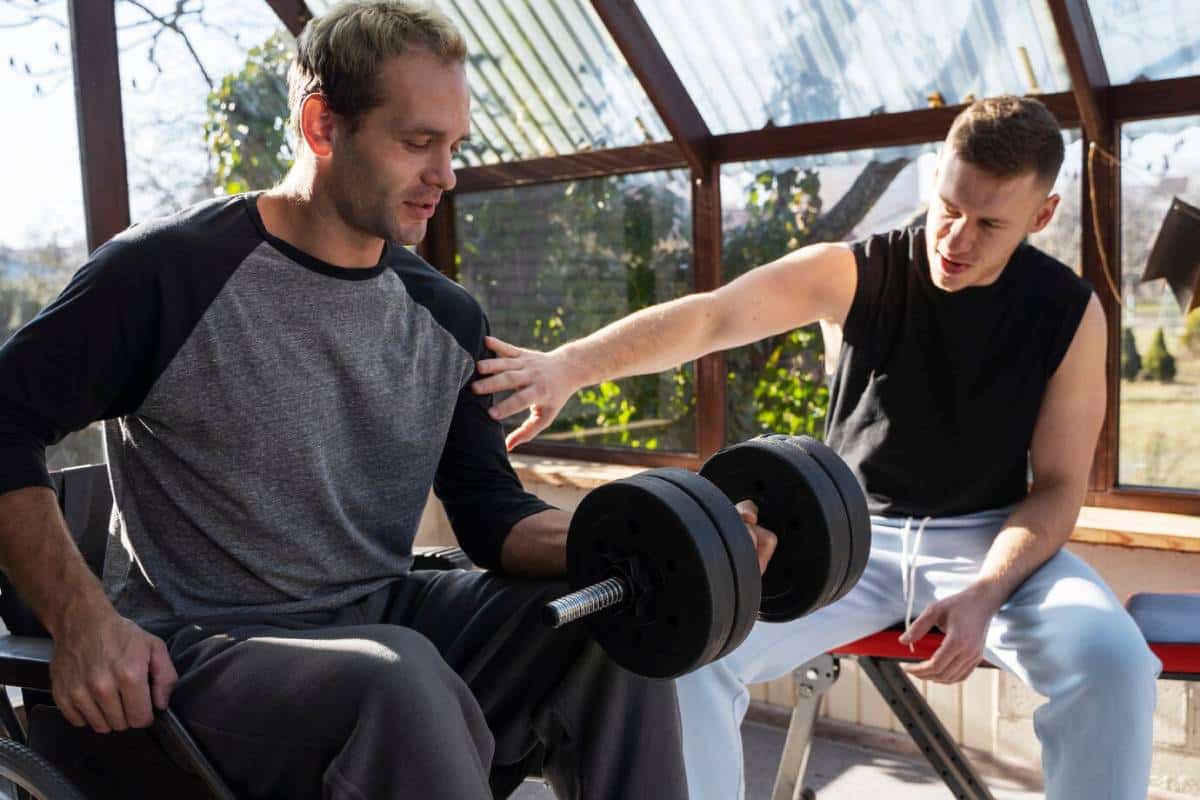
Creating a Home Workout Routine for People with Disabilities
Fitness should be inclusive, empowering, and accessible to all—regardless of age, ability, or circumstance. For individuals living with physical disabilities, developing a consistent, effective, and enjoyable exercise routine is entirely possible with the right guidance, equipment, and mindset.
At the heart of any successful home fitness plan is personalisation. Adaptive fitness routines don’t mean doing less—they mean doing what works for your body. Whether you’re navigating limited mobility, balance challenges, or joint sensitivity, there are countless ways to move more, feel stronger, and boost both physical and mental wellbeing from the comfort of your own home.
In this guide, we explore how to create an accessible workout plan tailored to your goals and needs. From low-impact strength training to seated cardio and flexibility exercises, we’ll break down the essentials of inclusive exercise at home and share practical tips for success.
Why Exercise Matters for People with Disabilities

Regular physical activity can benefit everyone. For those with disabilities, the advantages go far beyond fitness:
Key Benefits:
- Improved strength and endurance
- Increased independence and functional mobility
- Enhanced cardiovascular health
- Better posture and joint stability
- Reduced pain and stiffness
- Boosted mood, confidence, and energy levels
Most importantly, exercise empowers individuals to feel more in control of their health, mobility, and everyday life.
Getting Started: Important Considerations
Before starting any new exercise plan, especially if you’re managing a health condition or disability, it’s important to plan carefully.
1. Consult a Healthcare Professional
Speak with a GP, physiotherapist, or rehabilitation specialist to ensure exercises are appropriate and safe for your specific needs.
2. Set Clear, Personal Goals
Do you want to improve balance? Increase endurance? Reduce stiffness? Having defined goals helps shape the structure and purpose of your routine.
3. Assess Your Environment
Ensure your space is:
- Safe (free of tripping hazards)
- Accessible (wide enough for wheelchairs or walkers)
- Comfortable (good lighting and ventilation)
4. Use Support Tools If Needed
Adaptive tools—such as resistance bands with handles, stability cushions, or seated exercise equipment—can make movement more accessible and enjoyable.
Categories of Inclusive Home Exercise
A well-rounded routine includes strength, cardio, flexibility, and balance work. Here’s how to incorporate each safely and effectively.
1. Strength Training (Seated or Standing)

Strength training improves muscle tone, joint stability, and everyday functionality.
Sample Exercises:
- Seated shoulder press (with light dumbbells or resistance bands)
- Bicep curls (can be done unilaterally if needed)
- Wall push-ups or incline push-ups on a sturdy surface
- Seated leg extensions (with or without ankle weights)
Adaptive Tips:
- Use resistance bands instead of free weights for gentler tension.
- Perform movements slowly to maintain control.
- Focus on high reps with light resistance to build endurance safely.
2. Cardiovascular Training
Cardio helps with circulation, heart health, and energy levels.
Accessible Options:
- Seated marching or knee lifts
- Arm circles or punches to music
- Wheelchair push intervals
- Dancing in place (seated or standing, depending on ability)
Gentle Equipment Ideas:
- Arm ergometers (hand bikes)
- Mini pedal bikes (can be used on tables or floors)
Adaptive Fitness Routines Reminder: You don’t need to sweat heavily to get your heart rate up—movement consistency matters more than intensity.
3. Flexibility and Mobility
Improving range of motion helps reduce stiffness, ease tension, and maintain joint health.
Gentle Stretches:
- Neck tilts and rotations
- Shoulder rolls and chest openers
- Seated forward bends
- Ankle rolls and foot flexes
Tools for Support:
- Yoga straps
- Pillows or bolsters for seated comfort
- Wall or rail support for standing stretches
Inclusive Exercise at Home Tip: Pair stretching with deep breathing to aid relaxation and focus.
4. Balance and Coordination
Balance work reduces fall risk and improves body awareness.
Sample Drills:
- Single-leg stands (with chair or wall support)
- Tandem stance (heel-to-toe position)
- Seated weight shifts from side to side
- Ball toss against a wall to improve reaction time
Even gentle balance practice improves proprioception and builds functional strength for daily tasks.
Creating a Weekly Routine (Example Plan)

Here’s a sample routine that blends all key elements, designed to be adapted based on ability and energy levels.
| Day | Focus | Duration |
| Monday | Seated strength + cardio bursts | 20–30 mins |
| Tuesday | Flexibility + deep breathing | 15–20 mins |
| Wednesday | Core and posture exercises | 20 mins |
| Thursday | Low-impact cardio (hand cycle or marching) | 20–25 mins |
| Friday | Balance + strength (light weights or bands) | 20 mins |
| Saturday | Rest or guided chair yoga | Optional |
| Sunday | Gentle full-body stretch routine | 15–20 mins |
Modify reps, sets, and durations based on comfort and progress. The most important factor is consistency.
Equipment Recommendations for Accessible Home Workouts
A full gym isn’t necessary. These compact and adaptable tools can support your progress:
- Resistance Bands – Easy to grip and versatile for strength training.
- Seated Pedal Bike – Ideal for cardiovascular movement from a chair or wheelchair.
- Light Dumbbells or Wrist Weights – For controlled strength exercises.
- Yoga Strap – Helps with safe, supported stretching.
- Stability Cushion or Wobble Board – Excellent for seated balance training.
- Chair with Back Support – Doubles as a base for seated exercises or standing support.
Look for equipment labelled specifically for adaptive fitness routines or senior-friendly designs for added safety.
Online Resources and Accessible Exercise Content
The digital world has made accessible workouts more available than ever. Consider exploring:
- YouTube channels for seated workouts or disability-inclusive fitness
- Fitness apps with customisable settings for mobility or balance needs
- Virtual classes run by physiotherapists or certified adaptive fitness instructors
Ensure any online source is reputable and aligns with your health goals.
Motivation, Progress, and Self-Care
It’s normal to face physical and emotional fluctuations when building a new habit. Celebrate every milestone—no matter how small.
Motivation Boosters:
- Set short, achievable goals (e.g. “10 minutes of movement, 3 times per week”)
- Track your progress with a journal or app
- Involve a friend or caregiver for accountability and encouragement
Mental Health Perks:
Exercise can boost mood, reduce anxiety, and improve sleep—all of which are crucial for holistic health.
Safety First: Precautions and Modifications
Keep these tips in mind to maintain home fitness safety:
- Always warm up and cool down
- Hydrate before and after workouts
- Use proper footwear or non-slip mats where applicable
- Stop immediately if you feel pain, dizziness, or shortness of breath
- Modify exercises with the help of a healthcare provider if needed
Accessible workouts are meant to be sustainable—not exhausting or risky.
Fitness That Meets You Where You Are
Movement is a form of self-expression, resilience, and care. Whether you’re seeking to build strength, ease discomfort, or simply feel more empowered in your body, inclusive exercise at home can offer real and lasting benefits.
By designing a routine around your unique abilities and interests, you’re not just getting fitter—you’re redefining what fitness can look like.
Take action today: Pick one or two movements from this guide and commit to practising them this week. Your body and mind will thank you—and you’ll be one step closer to a stronger, more mobile future.